Are butcher's blocks the new kitchen island? Interior designers weigh in on this revived design feature
Butcher's blocks are back in a big way – and they're proving a popular solution to a free-standing kitchen island
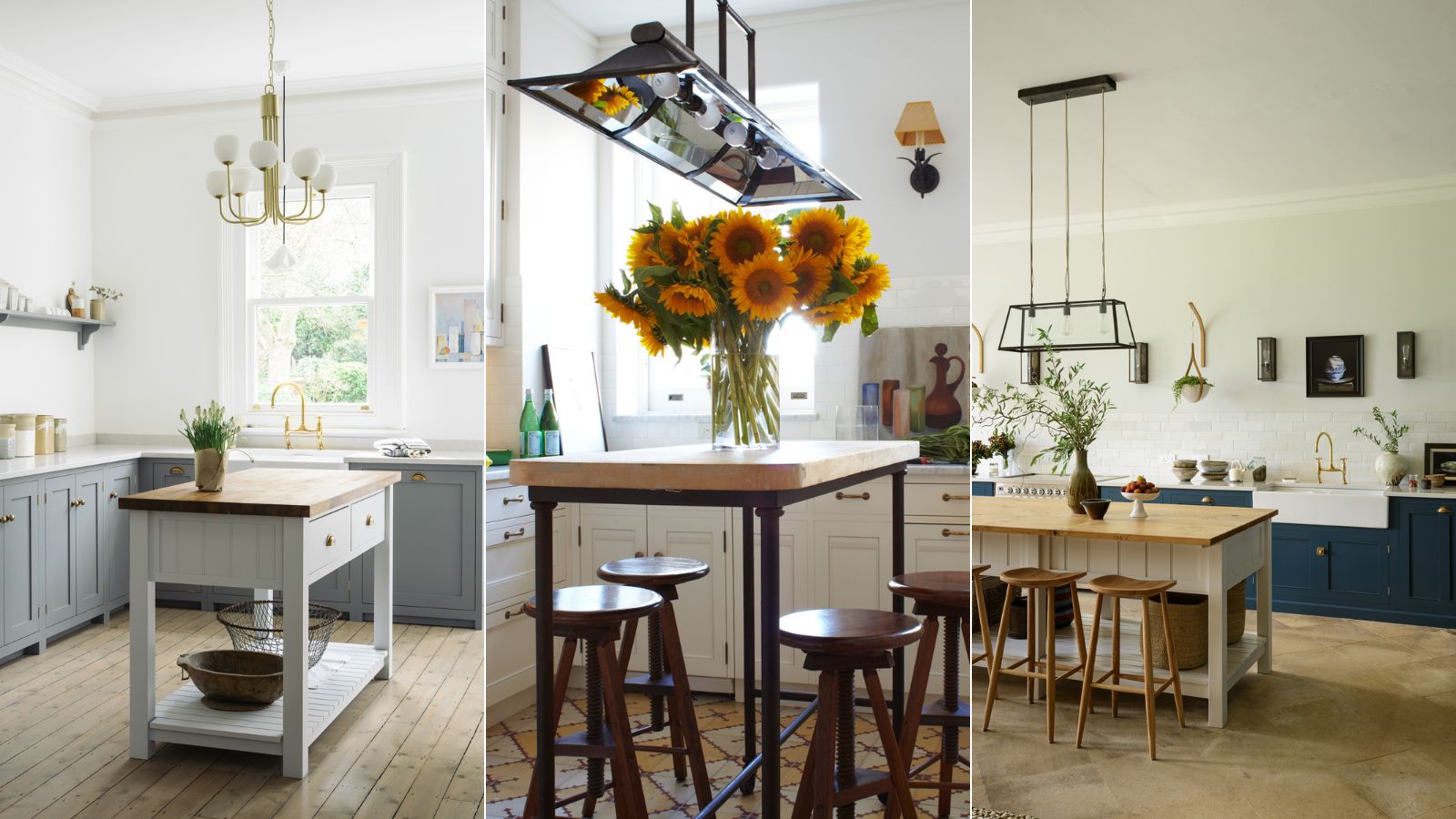
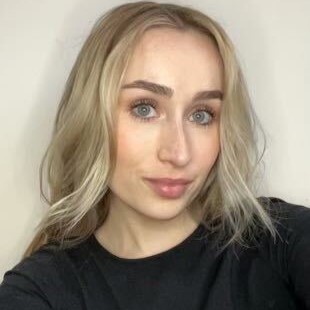
If you keep up with design trends, you've probably seen butcher's blocks becoming a popular addition to kitchen schemes. Portable, space-saving, and unique in design, are these revived pieces the new way to create a kitchen island?
In recent trends, kitchen island ideas have mostly consisted of beautiful built-in designs that follow a seamless cohesion with the rest of the kitchen cabinetry. But as trends this year move from uniform perfection to a more eclectic style, butcher's blocks are becoming all the more favorable.
So, are butcher's blocks the new way to create a kitchen island? To find out whether this free-standing alternative is really a good idea, we've turned to interior designers to find out what they think about this growing trend.
What is a butcher's block?
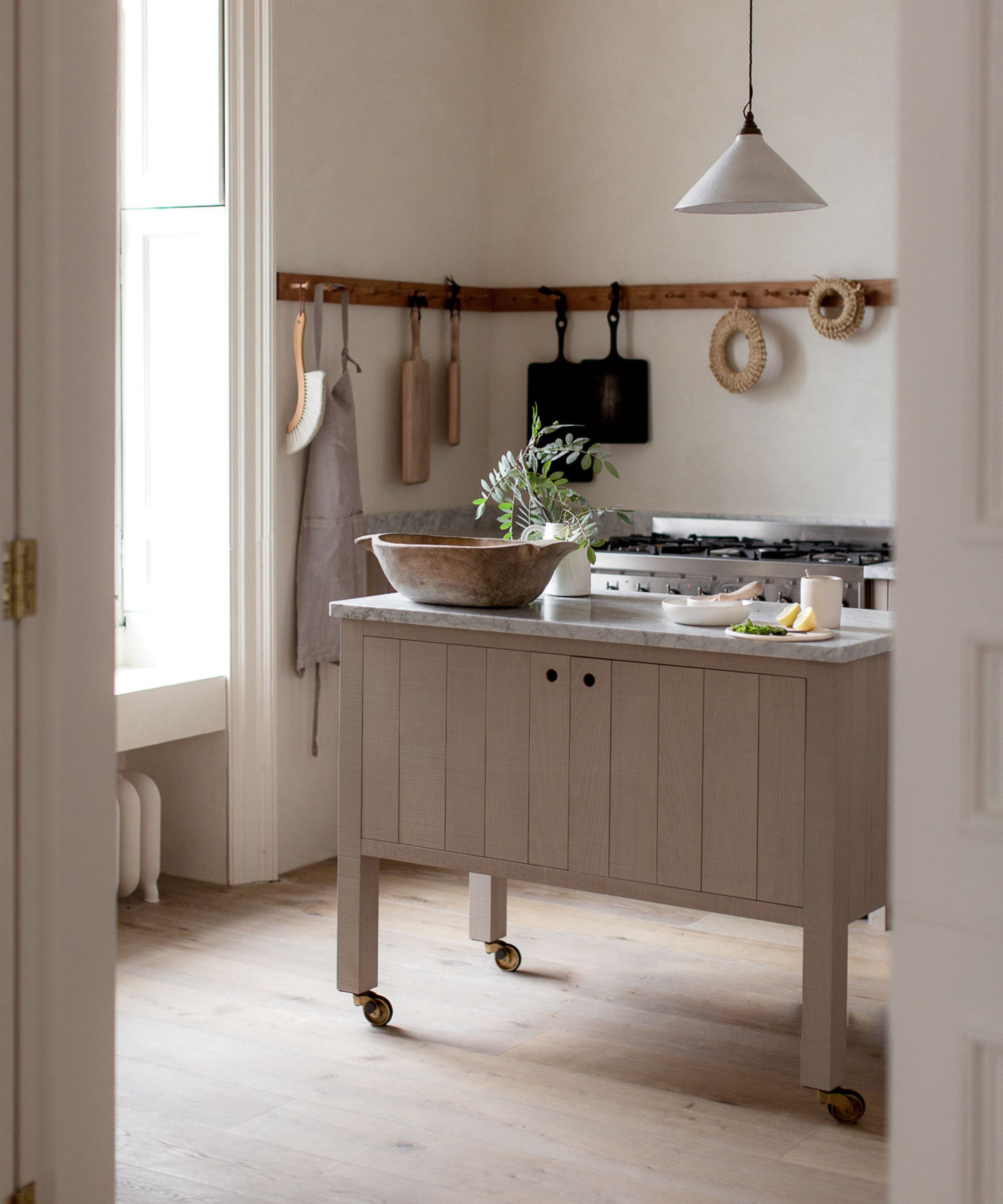
Butcher's blocks are large, durable slabs of wood, historically used by butchers to chop their produce. Their hardwearing properties are what makes them a popular choice for kitchen islands – they're a perfect material for counters where food prep takes place.
'A butcher's block is typically made by gluing or fusing together strips of wood. Due to the strong direction of the graining, they are particularly strong and durable when made of American or foreign hardwoods,' explains Seth Ballard, AIA, principal at Ballard + Mensua Architecture.
When a butcher's block is used as a kitchen island, they are typically a free-standing style of unit, some of which have wheels to make them portable. Often, open shelving is added below the counter, with hardwood and metal being popular materials to construct the framework.
Are butcher's block kitchen islands a good idea?
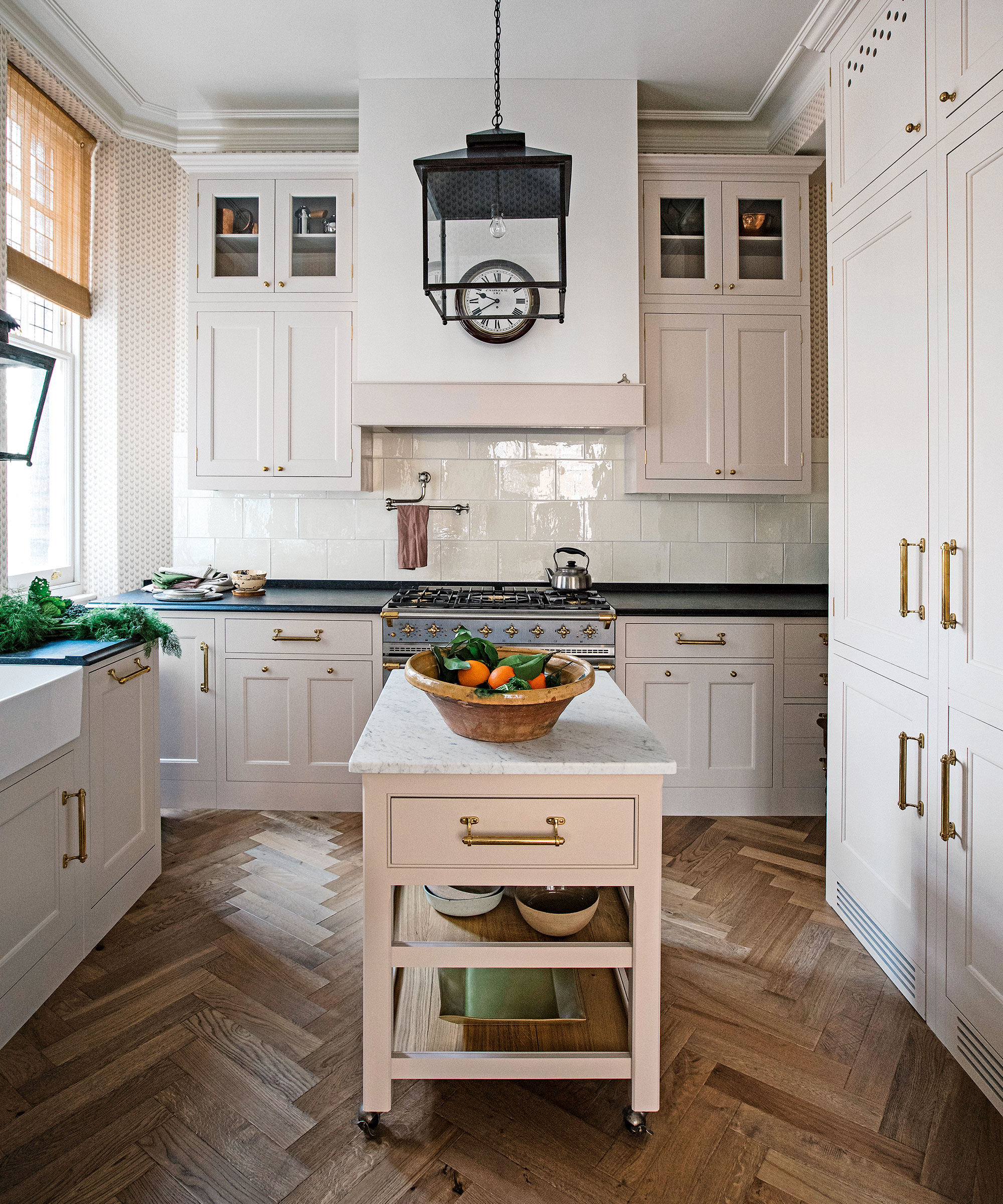
Choosing to use a butcher's block as a kitchen island comes down to your interior design style – they tend to suit kitchens that have an element of traditional or rustic style. That said, a butcher's block kitchen island can create a beautiful focal point and introduce a sense of character to your scheme.
'Over the years butcher's blocks have often been replaced with small islands and we are so pleased to see them making a comeback. There is something really quite pleasing about a moveable piece of furniture. It gives you different options depending on the situation,' says Helen Parker, creative director at deVOL.
'You can pull your butcher's block to the end of your table for big gatherings where you need extra space to lay out your platters of food or move it to the cooker when you need more surface space for plating food,' she suggests.
Alongside the portable benefits of butcher's blocks, there are many practical benefits to the material used to create them. 'Using a butcher's block as an island is a great idea. It allows you to treat the island more as a piece of functional furniture and provides a break from material monotony,' says interior designer Peter Dunham.

'Some things, like chopping, you don’t really want to do on your marble, granite, or other “strong” stones, which still ding. The butcher block material is made for this, and is a more inviting and comfortable surface for eating and serving or even working on your laptop,' he adds.
It's not just the functional aspects of butcher's block kitchen islands that make them a popular feature – they are also incredibly visually appealing. 'We always give our clients the choice of a butcher's block with an understanding it will be cut on and used as a cutting board,' says Seth.
'In this case, we show examples of what the wood will look like with the knife marks and patina over time,' he explains. This lived-in and used look is part of the enduring appeal of butcher's blocks, especially at a time when interior design trends are embracing 'imperfect' spaces.
5 butcher's block kitchen island ideas
Whether you keep it simple with a butcher's block on legs, opt for a portable piece, or add extra kitchen storage, these butcher's block kitchen islands are sure to inspire a new look for your space.
1. Add wheels to make it portable
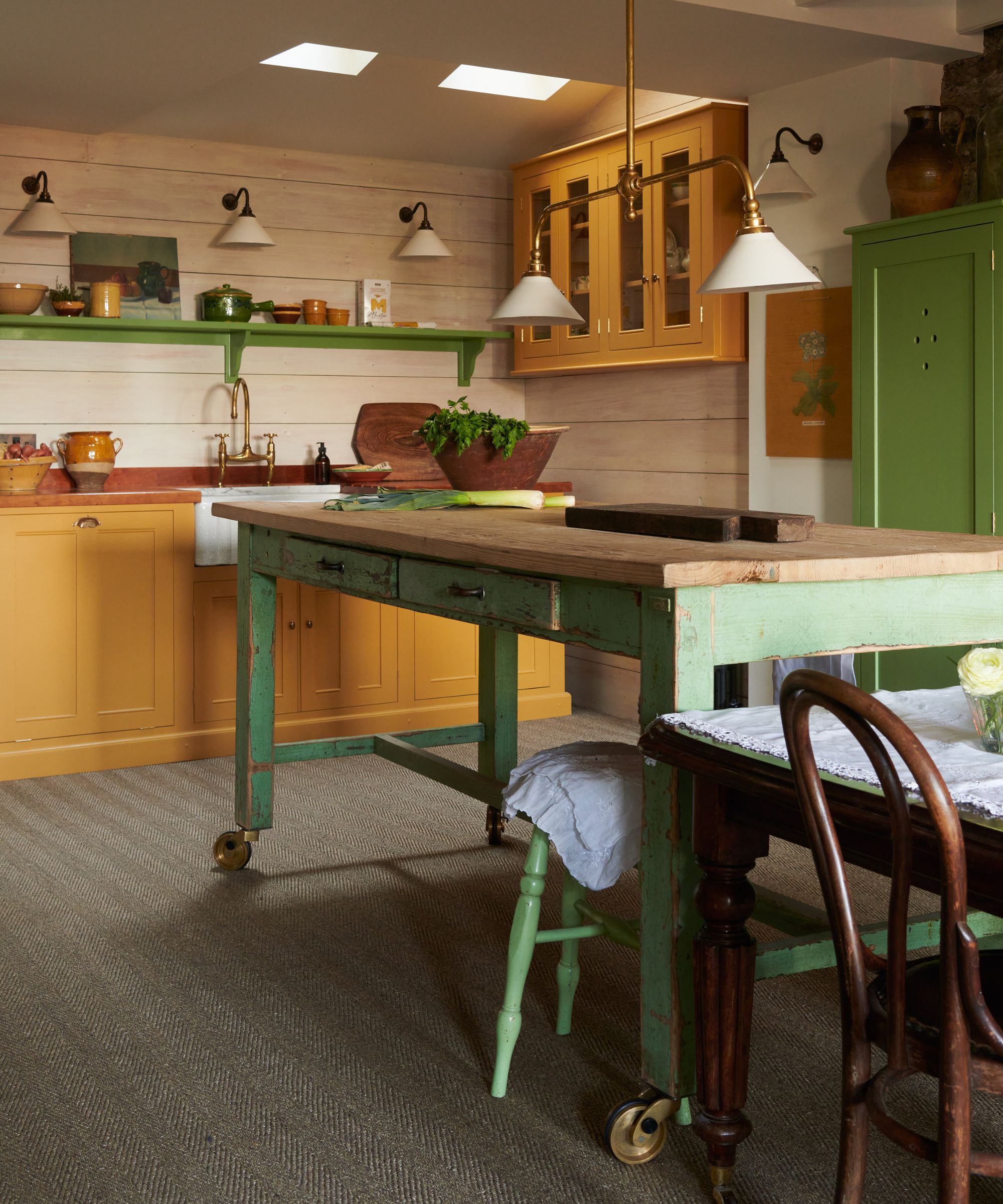
One of the features that makes butcher's blocks so appealing is that they're smaller than typical built-in kitchen islands, so not only are they space-saving, but there is the option to add wheels to make them portable.
'Back when deVOL began we were very much in favor of butcher's blocks. You could always squeeze one into most kitchens, even if you didn’t have the room for an island or prep table. We put chunky castors on the legs so you could wheel these little prep tables around the kitchen,' says Helen.
In this scheme, a simple portable kitchen island has been created with the addition of castors, while the green paint color used on the island creates a farmhouse kitchen feel paired with the yellow cabinetry.
2. Introduce contrast with different wood tones
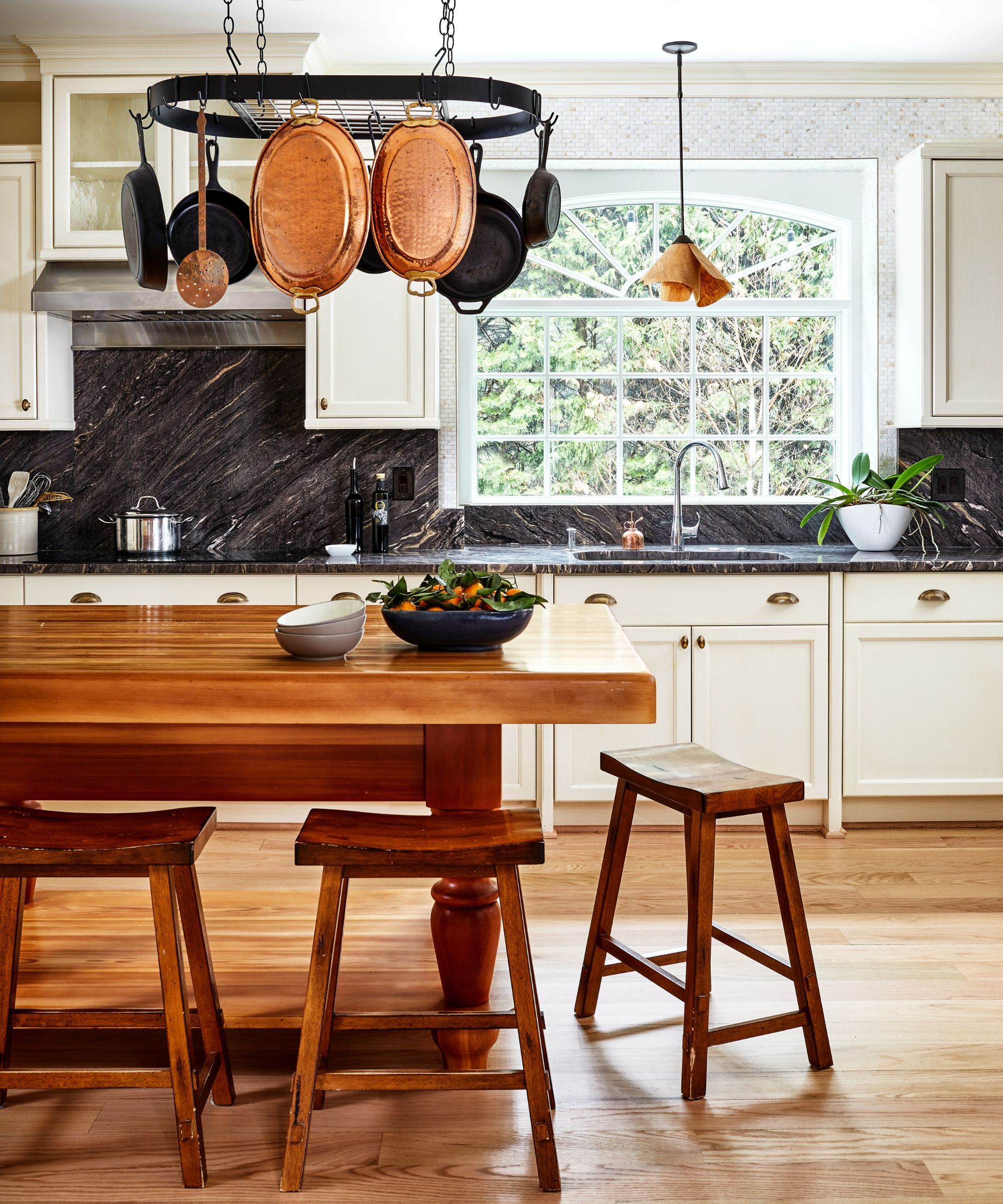
A butcher's block kitchen island is a unique feature, so it only seems right to make it the focal point of the room. To do this, try introducing contrast between the island and the rest of the kitchen, whether it's through the style, color, or finish.
There are lots of ways to introduce contrast in the kitchen. Seth suggests, 'Paint the perimeter cabinets one color with the island contrasting or try to contrast with the floor. For example, a lighter or medium wood floor goes well with a dark walnut top, or a maple top goes well with a darker floor.'
This kitchen is a perfect example, where white cabinetry allows the natural wood tones of the butcher's block kitchen island to truly shine.
3. Add extra storage

Choosing a butcher's block as your kitchen island doesn't mean you need to compromise on storage space. And while it might not offer the cabinetry space a built-in island would, there are still a few ways to make the most of the additional space.
A typical element to find on a butcher's block island is an open shelf at the bottom, like in the kitchen scheme. It provides a useful space to store larger kitchen items such as pots, pans, and large bowls that might not fit in standard cupboards.
This butcher's block also has two deep drawers just below the counter, perfect for storing small kitchen items you need easy access to, but don't necessarily want on display.
4. Make it multi-functional

As with any style of kitchen island, introducing a butcher's block provides more than one function. When designing your ideal butcher's block, consider both how it works in your space and how you want it to function.
'In this kitchen, we built the island so it could move around easily. It doubles as a bar or additional serving area, which the client uses when entertaining. It’s a good-looking, flexible, and functional choice for the kitchen,' explains Peter.
The simple structure of this butcher's block means it can be used as extra surface space for food prep, an intimate seating area, or as a standing bar when entertaining.
5. Mix materials for a more modern approach

Butcher's blocks are almost always made out of wood, and they typically feel more traditional in design. While this tailors perfectly to some people's tastes, for others it might not fit in with their design style.
A great way to make a butcher's block kitchen island work in a more contemporary space is to carefully mix different materials. This can create a beautiful old-meets-new feel to the space that feels timeless and on-trend.t
This kitchen has paired the mid-toned wood of the island with surrounding countertops made from marble. Paired with the dark blue cabinetry, the two elements tie together perfectly.
According to interior designers, butcher's blocks are the new way to create an instant kitchen island. Versatile and aesthetic, they add charm and character to any kitchen scheme, whether you're designing a large space or something more compact.
Sign up to the Homes & Gardens newsletter
Design expertise in your inbox – from inspiring decorating ideas and beautiful celebrity homes to practical gardening advice and shopping round-ups.

I’ve worked in the interiors magazine industry for the past five years and joined Homes & Gardens at the beginning of 2024 as the Kitchens & Bathrooms editor. While I love every part of interior design, kitchens and bathrooms are some of the most exciting to design, conceptualize, and write about. There are so many trends, materials, colors, and playful decor elements to explore and experiment with.
-
 Ina Garten's storage pantry is an insightful window into all of the best cookware used by the chef – and it's easy to recreate on your kitchen shelves from $48
Ina Garten's storage pantry is an insightful window into all of the best cookware used by the chef – and it's easy to recreate on your kitchen shelves from $48The beautiful dishware in The Barefoot Contessa's Hamptons pantry showcases the tools she uses most often to cook – this is exactly how you replicate it
By Sophie Edwards Published
-
 Extend the lifespan of your appliance with 5 simple but crucial washing machine maintenance tips
Extend the lifespan of your appliance with 5 simple but crucial washing machine maintenance tipsFrom cleaning the filters to keeping the door open, experts reveal the washer tips they swear by
By Andy van Terheyden Published